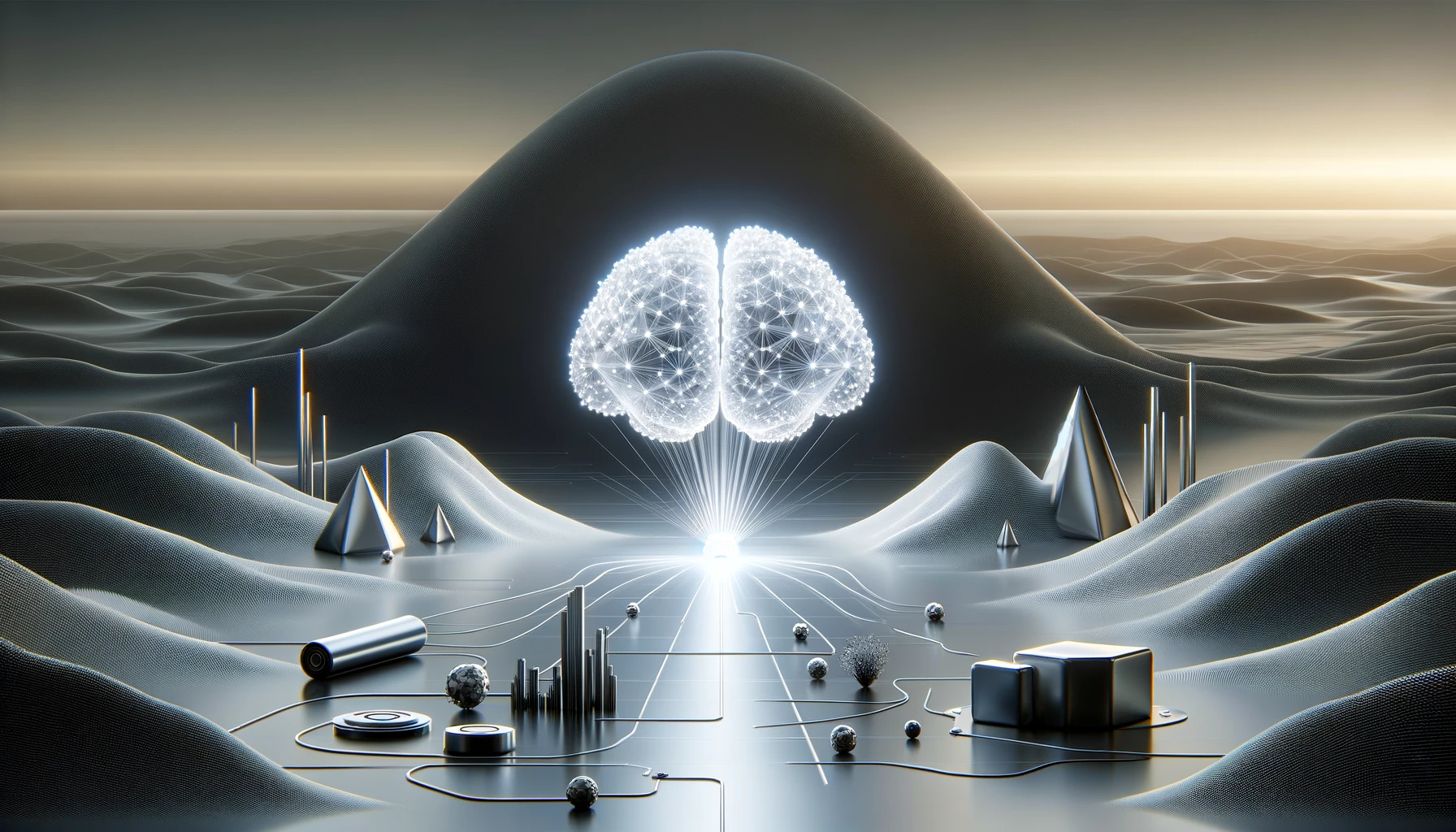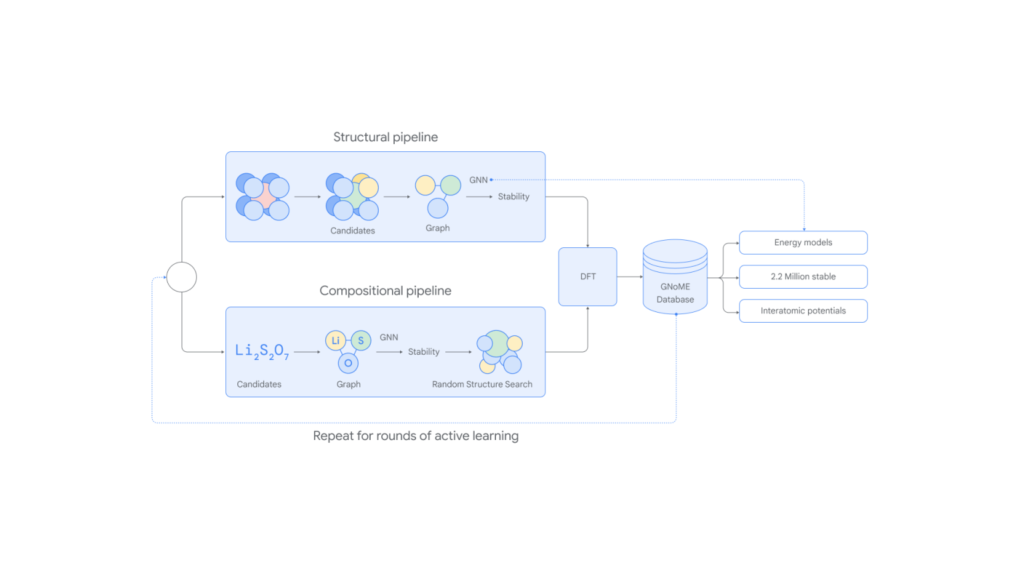
Researchers at Google DeepMind have made a groundbreaking leap in material science, unveiling 2.2 million new crystal structures with immense potential in numerous industries. Just imagine that before these structures were predicted by Google’s deep learning programs, scientists knew of fewer than 50,000 different crystals.
This monumental discovery not only showcases the prowess of AI in material exploration but also marks a significant milestone surpassing centuries of scientific discovery.
AI and material innovation
The huge trove of new crystals was identified by GNoME, DeepMind’s deep learning AI specifically designed for this purpose. Trained with data from the Materials Project, GNoME suggested structures likely to be stable, later verified with established computational techniques.
Of the more than two million predicted crystalline structures, 381,000 of the more promising candidates are being openly shared with scientists worldwide for further exploration. This means that the number of known materials could jump tenfold almost overnight.
“While materials play a very critical role in almost any technology, we as humanity know only a few tens of thousands of stable materials,” said Dogus Cubuk, materials discovery lead at Google DeepMind, during a recent press briefing.

Until now, discovering new materials has mostly been a slow, costly process of trial and error. The time-honored approach involved making incremental changes to known materials or combining elements based on principles of solid-state chemistry. This labor-intensive method has produced tens of thousands of stable materials over many years.
But with DeepMind’s latest development, the possibilities are endless. Although these materials will still require synthesis and testing — a process that still takes a long time to follow through — the AI’s predictions are expected to hasten the discovery of materials vital for next-generation technologies like energy storage, solar cells, and high-density batteries.
For instance, among the predicted materials are potential lithium ion conductors and new layered compounds similar to graphene, holding great promise for superconducting materials. Superconductors can conduct electrical current with zero resistance, greatly boosting efficiency.
In parallel, there are initiatives designed to speed up material synthesis. The experimental A-Lab at the Lawrence Berkeley National Laboratory can automatically synthesize materials around the clock. During a session lasting 17 days, the lab synthesized 41 materials, a task that typically takes months or years. Coupled with AI-predicted crystal structures, one could envision how new materials could be made from scratch in almost the blink of an eye compared to cumbersome conventional methods.
“This is the future—to design materials autonomously using computers, but also then to make them autonomously using these robotic labs and learn from the process,” Kristin Persson of the Lawrence Berkeley National Laboratory said in a media briefing.
A new era for material science?
The research’s potential applications are vast, ranging from developing new layered materials to advancing neuromorphic computing. Scientists from the University of California, Berkeley, and the Lawrence Berkeley National Laboratory have already utilized these findings, creating new materials with a success rate of over 70%, according to DeepMind.
What’s particularly exciting is that this is just the latest in a string of AI breakthroughs from DeepMind. Previously, Google’s artificial intelligence arm unveiled the extremely powerful AlphaFold, which cracked the code for 200 million protein structures, or virtually all proteins known to science.
The findings were reported in the journal Nature.









